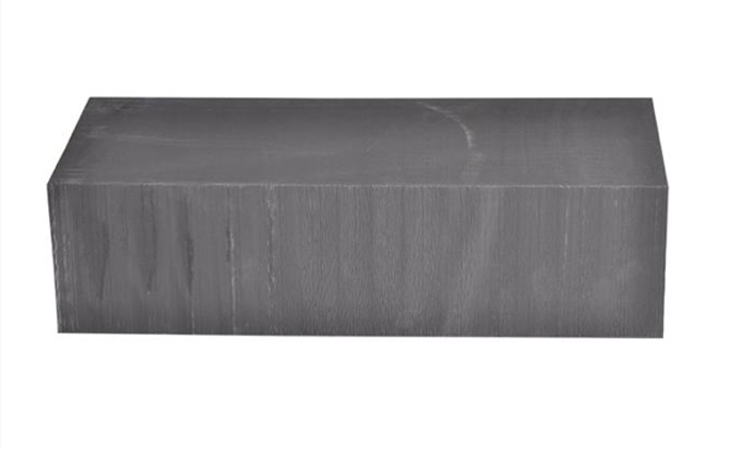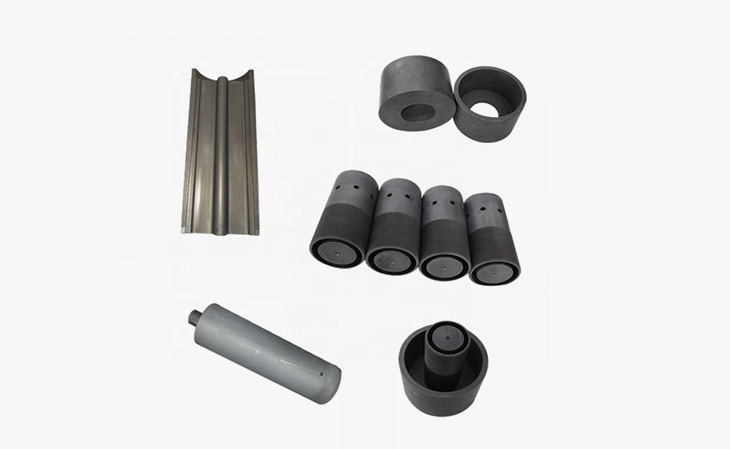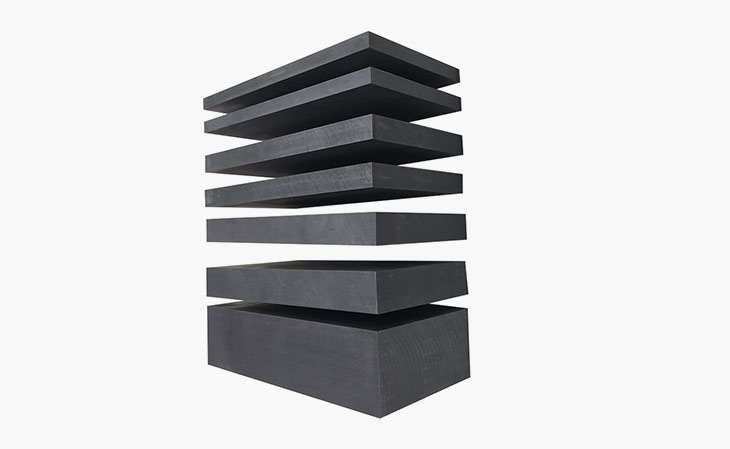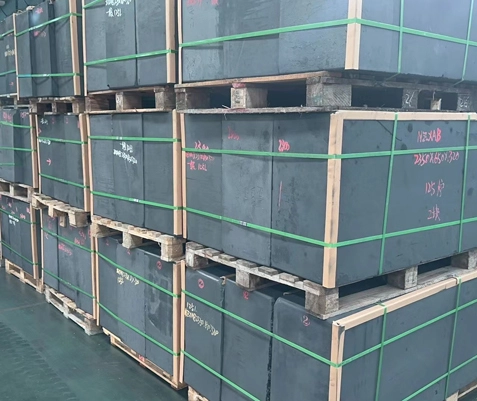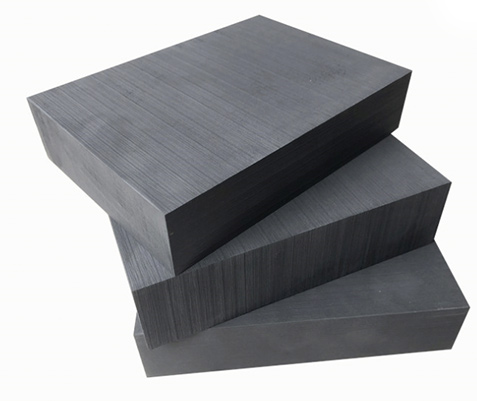What is ISO Molded Graphite
ISO molded graphite is a type of graphite material that has been manufactured using an isostatic pressing process. This process involves subjecting a graphite material to high pressure in a closed container to ensure uniform density and isotropic properties throughout the final product. The result is a graphite material with consistent mechanical, thermal, and electrical properties in all directions, making it highly desirable for a wide range of industrial applications. Due to its unique manufacturing process, ISO molded graphite exhibits high strength, excellent thermal conductivity, and superior resistance to thermal shock, making it ideal for use in high-temperature environments such as in the production of semiconductor and LED industries, as well as in aerospace and automotive applications. ISO molded graphite is often used in applications that require precise shaping and intricate designs, thanks to its ability to be machined to tight tolerances. This makes it a popular choice for manufacturing components such as crucibles, heating elements, and various types of molds. Overall, ISO molded graphite's uniform properties, high strength, and thermal stability make it a versatile and reliable material for demanding industrial applications, earning it a prominent place in various high-tech industries.
Properties of isostatically pressed graphite
Isostatically pressed graphite possesses a remarkable array of properties that make it a highly desirable material for a wide range of industrial applications. With its exceptional characteristics, isostatic graphite stands out as a top choice for demanding environments where reliability, stability, and thermal performance are critical.
With extremely high thermal and chemical resistance, isostatic graphite excels in harsh operating conditions, maintaining its structural integrity and functionality even in extreme temperature and chemical exposure. Its excellent thermal shock resistance further enhances its suitability for high-temperature applications, where rapid temperature changes occur.
High electrical and thermal conductivity are intrinsic to isostatic graphite, making it invaluable in electrical and thermal management applications, such as in the production of heating elements, crucibles, and various components for high-temperature processes. As its temperature rises, the strength of isostatic graphite increases, ensuring its reliability and structural integrity even in challenging operating conditions.
The ease of machining is a notable advantage, allowing isostatic graphite to be shaped and customized with precision to meet specific design requirements. Additionally, its high purity level of less than 5 ppm ensures that it is suitable for applications that demand exceptional levels of cleanliness, such as in semiconductor manufacturing and other high-tech industries.
Isostatically pressed graphite's unique combination of properties makes it an ideal material for various industrial uses, including aerospace, automotive, semiconductor production, and LED manufacturing. Its structural balance, high density, mechanical strength, and resistance to oxidation and corrosion further underscore its versatility and reliability in demanding industrial settings. With superior thermal and electrical conductivity, exceptional thermal shock resistance, and high temperature stability, isostatic graphite stands
WH graphite block supplier offer EDM Graphite Blocks, Extruded Graphite Block, Isostatic Graphite Block , High Purity Graphite Block, High Density Graphite Block, Vacuum Furnace Graphite, Molded Graphite Block, Large Graphite Block.
Applications of isostatically pressed graphite
Isostatically pressed graphite finds an extensive range of applications across numerous industries due to its unique set of properties that make it a highly versatile and reliable material. From high-tech manufacturing processes to aerospace and energy applications, the exceptional properties of isostatic graphite have positioned it as a material of choice for demanding industrial uses.
In the field of Electrical Discharge Machining (EDM), isostatic graphite is widely utilized due to its exceptional electrical conductivity, machinability, and resistance to wear and heat. EDM graphite electrodes made from isostatic graphite are essential for producing intricate and highly precise shapes in materials such as metal, using the EDM process.
Graphite molds for casting metal are another prominent application area. The ability of isostatic graphite to withstand high temperatures, coupled with its superior thermal shock resistance, makes it an ideal choice for producing molds used in the casting of various metals. Isostatic graphite's thermal stability and resistance lead to extended mold life and high-quality castings.
In the steelmaking industry, isostatic graphite plays a crucial role in the production of steel, where it is used in a variety of applications, including as continuous casting dies, furnace parts, and hot pressing molds, taking advantage of its high-temperature resistance and mechanical strength.
Isostatic graphite also finds its place in the innovative world of energy, with its application in the production of graphite solar panels that require high purity, stability, and thermal conductivity. These solar panels utilize isostatic graphite in components such as the collector grid, where its unique properties ensure optimal solar energy conversion.
Furthermore, isostatic graphite is extensively used in vacuum furnace applications, where its exceptional thermal stability and resistance to chemical reactions in high-temperature environments are essential. This material is also employed in nuclear graphite products due to its ability to withstand extreme conditions in nuclear reactors, showcasing its reliability and safety in such critical applications.
In the aerospace industry, isostatic graphite is used in high-temperature applications such as rocket nozzles and aerospace components, taking advantage of its lightweight nature, high strength, and resistance to extreme temperatures and pressures.
The diverse applications of isostatically pressed graphite across industries demonstrate its importance and reliability in meeting the demands of modern manufacturing, energy production, and technological innovation. Its high thermal stability, electrical and thermal conductivity, resistance to wear and heat, and overall durability make it an indispensable material for a broad spectrum of industrial uses, contributing to advancements in various fields.
What is the process of isostatically pressed graphite?
Isostatically pressed graphite is manufactured using several pressing technologies, each designed to optimize the properties of the material. Cold isostatic pressing (CIP) involves the use of a mold made from rubber or plastic at room temperature, with liquid as the pressure medium, typically employed for molding powder materials. Pressures can range from 100 to 630MPa. In China, the CIP method is commonly utilized in the production of isostatic graphite material.
Temperature isostatic pressing technology also plays a crucial role, operating at lower temperatures typically less than 80 to 120°C, but in some cases, up to 250 to 450°C. This method uses special liquid or gas to transmit pressure, approximately 300MPa, and is mainly applied to powder materials at room temperature that cannot be formed at that temperature, such as graphite material and polyamide rubber materials. This process enables the creation of a solid body at higher temperatures.
Hot isostatic pressing (HIP) combines high temperature and high pressure throughout the entire isostatic pressing process. HIP is used for powder consolidation, integrating the traditional powder metallurgy molding and sintering operations into a single step, as well as for diffusion bonding of workpieces and the elimination of casting defects in complex-shaped production parts. In hot isostatic pressing, inert gases like argon and ammonia serve as the pressure transmission medium, while metal or glass is typically used as the envelope material. Operating temperatures generally range from 1000 to 2200°C, with working pressures often at 100 to 200MPa. These distinct pressing techniques enable the production of isostatically pressed graphite with specific properties tailored to various industrial applications.
What is the difference between extruded and isostatically pressed graphite?
The primary difference between extruded and isostatically pressed graphite lies in their manufacturing processes, resulting in distinct material properties. Extruded graphite is produced using an extrusion process, where a mixture of graphite and a binding agent is forced through a die to form the desired shape. This method gives extruded graphite a coarser grain size compared to isostatically pressed graphite. It also exhibits lower strength but higher thermal and electrical conductivity.
On the other hand, isostatically pressed graphite is manufactured through cold isostatic pressing, providing a more uniform grain structure, resulting in higher strength and a finer grain size. This process ensures that the material possesses greater mechanical and thermal properties when compared to extruded graphite. Isostatically pressed graphite's isotropic properties also make it highly resistant to thermal shock and chemical corrosion, giving it an advantage in applications that require high strength, precision, and reliability.
In summary, while both extruded and isostatically pressed graphite have their merits, the choice between the two is largely dependent on the specific requirements of an application. Extruded graphite's higher thermal and electrical conductivity may suit certain applications, while isostatically pressed graphite's superior strength and finer grain size make it ideal for applications demanding precision, high mechanical properties, and resistance to extreme environmental conditions.
 English
English
